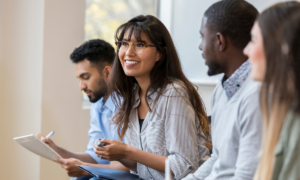In the dynamic world of marketing, an effective marketing brief serves as the compass, guiding the campaign from its conceptualization to execution. Providing clarity, focus, and alignment, it plays a vital role in a campaign’s success. This detailed guide explores the nuances of a marketing brief, its critical importance, and how to develop one. We will align our discussion with a custom marketing brief template that includes important factors such as market trends, competitive landscape, and key challenges.
Table of Contents
What is a Marketing Brief?
A marketing brief is a strategic document outlining a marketing campaign’s trajectory. It provides a comprehensive overview of the campaign, encompassing key components such as the campaign’s objectives, goals, target audience, product/service information, competitive landscape, market trends, key challenges, competitor analysis, marketing strategy, deliverables, budget, timeline, and required approvals.
Why a Marketing Brief Matters?
A comprehensive marketing brief ensures everyone involved in the campaign is on the same page, fostering unity and efficiency. It forms a blueprint of the campaign strategy, guiding the creative process and maintaining alignment with the brand’s identity. Moreover, it sets a benchmark against which the campaign’s success can be measured, highlighting areas that require improvement and optimizing future campaigns.

Crafting a Custom Marketing Brief
An impactful marketing brief requires careful consideration of several elements. Below, we break down each component of the custom template:
- Campaign Name: This is the title of your campaign, reflecting its essence.
- Campaign Objective: This outlines the broad purpose of your campaign.
- Campaign Goals: These are the specific, measurable outcomes that the campaign aims to achieve.
- Target Audience: This includes detailed information about your ideal customer persona.
- Company Information: This provides an overview of your company and its offerings.
- Product/Service Information: This section provides detailed information about the product or service that the campaign will promote.
- Competitive Landscape: This offers an overview of the market competition, highlighting your primary competitors.
- Market Trends: This part outlines current market trends relevant to your product or service.
- Key Challenges: Identify potential challenges and obstacles that the campaign might face.
- Competitor Analysis: A deeper dive into the strengths and weaknesses of your main competitors, and how your offering compares.
- Marketing Strategy: This outlines your strategic approach to the campaign, including the marketing channels you plan to use.
- Deliverables: A list of tangible outputs the campaign is expected to produce.
- Budget: An estimate of the financial resources required for the campaign.
- Timeline: This includes the campaign’s start and end dates, as well as key milestones.
- Approvals: A list of people who need to approve the brief and the completed campaign.
Marketing Brief Example
To illustrate, let’s take a look at a sample marketing brief for a company:
Campaign Name: AI for All
Campaign Objective: To promote our new, user-friendly AI software that enables businesses of all sizes to streamline operations.
Campaign Goals:
- Increase awareness of our AI software among small-to-medium-sized businesses by 50% within six months.
- Generate at least 500 leads through the campaign.
- Achieve a 20% conversion rate on the leads generated.
Target Audience: Decision-makers in small to medium-sized businesses, particularly those in operations, logistics, and management roles.
Company Information: We are XYZ Corp, an innovative AI solutions provider focused on creating user-friendly AI tools that empower businesses of all sizes to optimize operations and drive growth.
Product/Service Information: Our AI software, AIPlus, is a versatile tool that leverages machine learning to automate various business operations, leading to improved efficiency and accuracy.
Competitive Landscape: The AI market is quite competitive, with major players such as IBM, Google, and Amazon Web Services dominating the industry. However, our product stands out due to its focus on ease of use and accessibility for businesses of all sizes.
Market Trends: AI is increasingly seen as an essential tool for business operations, with a rising number of businesses of all sizes looking to incorporate AI in their operations. There’s a growing demand for user-friendly AI tools that do not require extensive technical expertise to use.
Key Challenges: Our key challenges include breaking through the noise of the crowded AI market and reaching our target audience effectively.
Competitor Analysis: While major players like IBM, Google, and AWS offer robust AI tools, they often require substantial technical know-how, and their pricing may be inaccessible for smaller businesses. Our product, AIPlus, is designed to be user-friendly and affordable, meeting a significant gap in the market.
Marketing Strategy: We plan to use a combination of content marketing (blog posts, case studies, and whitepapers), email marketing, social media marketing, and PPC ads to reach our target audience.
Deliverables: Marketing materials including blog posts, case studies, whitepapers, social media content, email newsletters, and PPC ad copy.
Budget: $50,000 for content creation and promotion, $25,000 for social media marketing, $20,000 for email marketing, and $30,000 for PPC ads.
Timeline: The campaign will start on July 1, 2023, and conclude on December 31, 2023. Key milestones include campaign kickoff (July 1), product launch (August 1), mid-campaign review (October 15), and campaign conclusion and review (December 31).
Approvals: The marketing brief and final campaign need to be approved by the CEO, Marketing Director, and Product Manager.
This is just an example, and the details would be tailored to your specific company, product, and market. But it should give you a good idea of what a completed marketing brief might look like.
Leveraging the Marketing Brief for Campaign Success
The marketing brief isn’t merely a preparatory tool—it’s a dynamic guide that can steer your campaign towards its goals. As the campaign progresses, the marketing brief helps monitor its alignment with the planned strategy. Post-campaign, it serves as a benchmark to measure the campaign’s success and identify areas for improvement.
A well-thought-out marketing brief is instrumental in driving a successful marketing campaign. With this custom template, you are now equipped to construct a detailed marketing brief that perfectly fits your campaign needs. Remember, the brief isn’t a one-and-done document; it’s a strategic tool for evaluating campaign performance and shaping future successes. Happy marketing!







